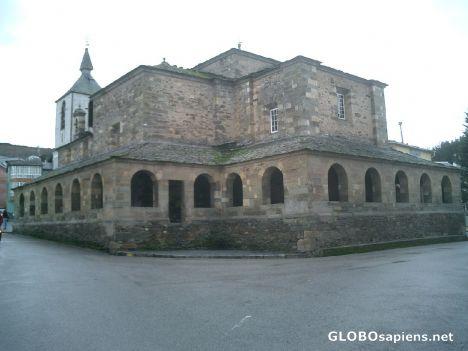

| Beyond Borres | Looking Ahead | The Rio Navia | Heather on the Hills |
Alan, descending |
|---|---|---|---|---|
 |
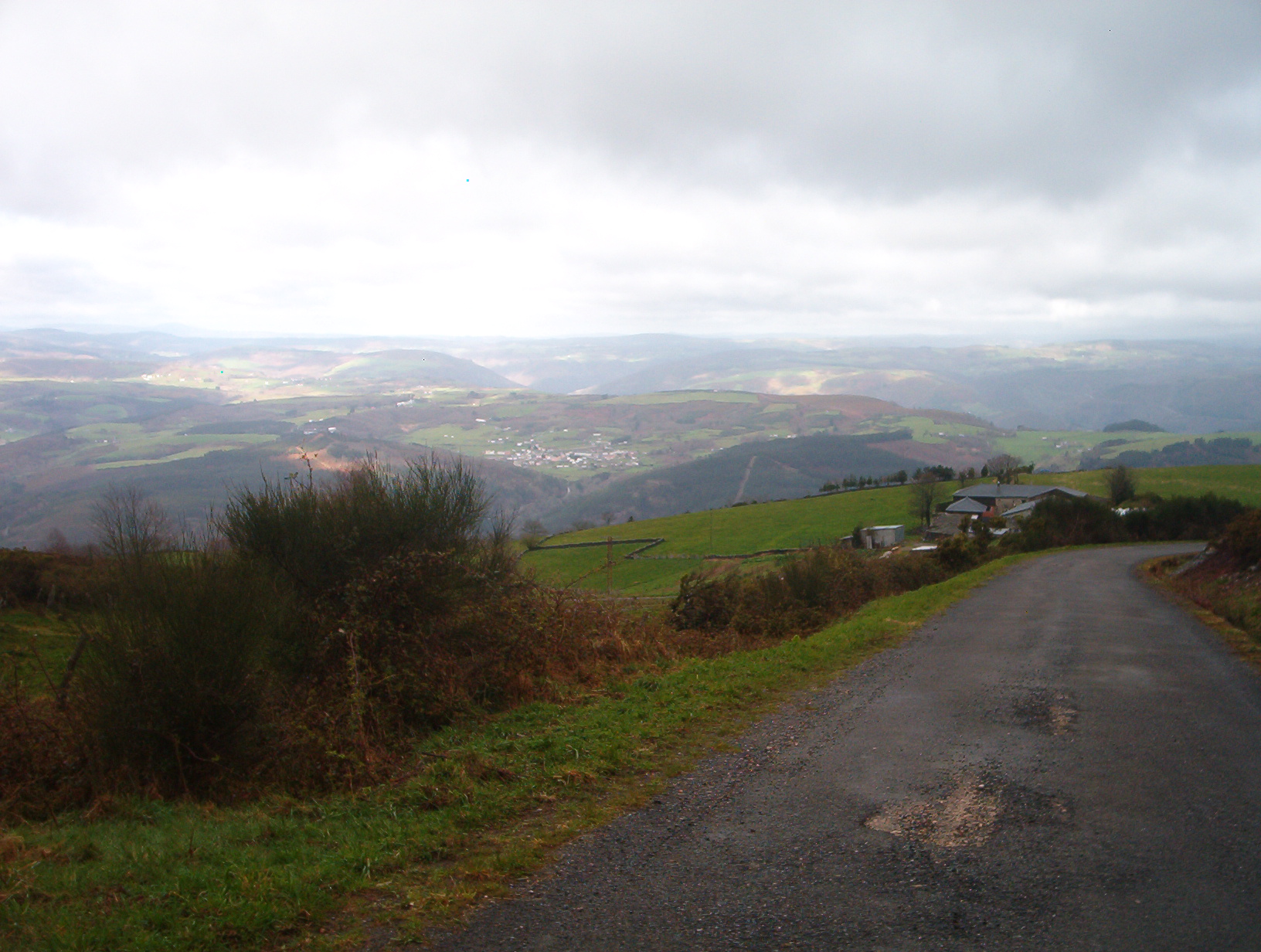 |
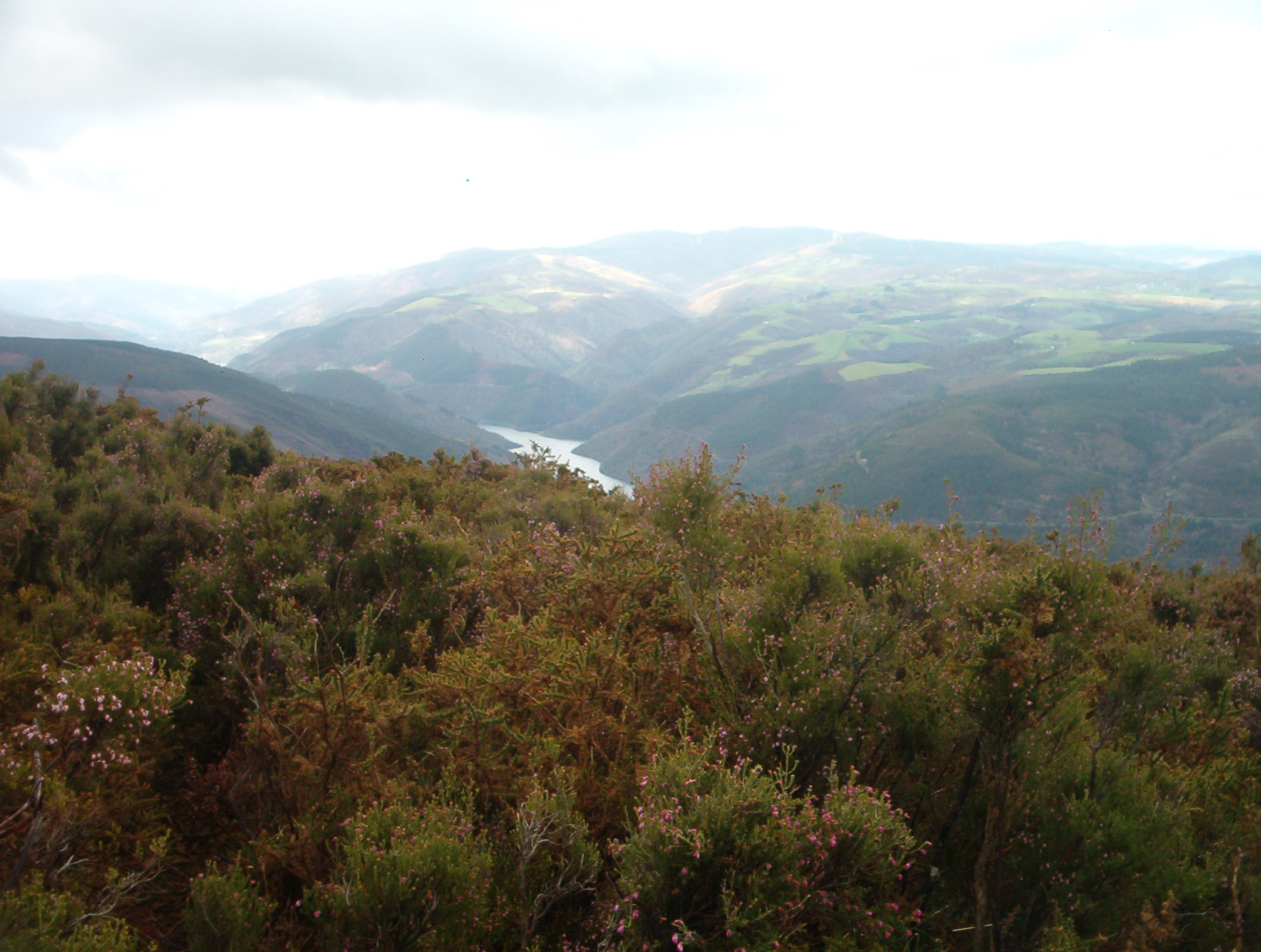 |
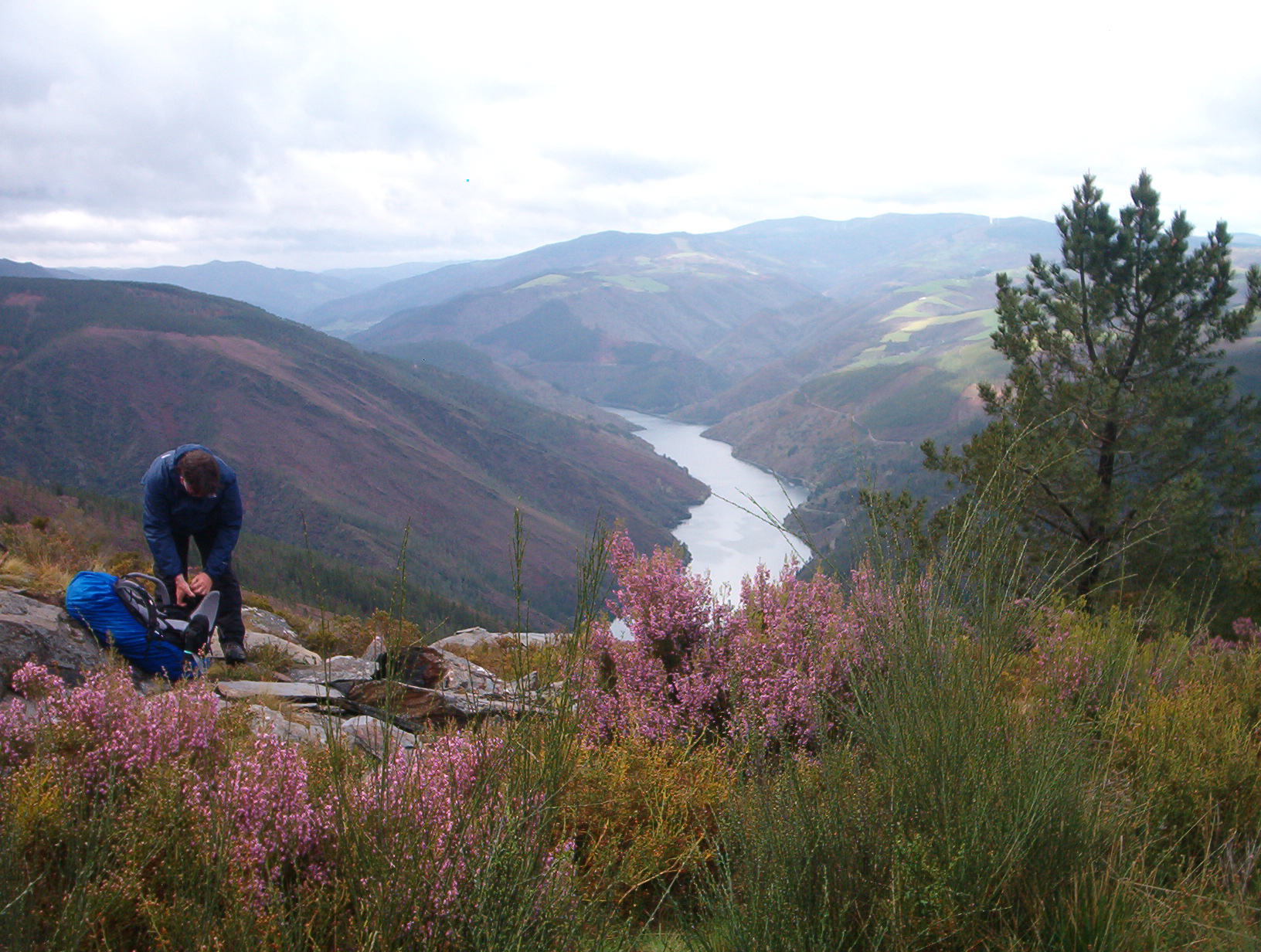 |
 |
Congratulations, you've crossed the highest point on this Camino, but by no means are you finished clambering uphill and down dale. From Berducedo the Camino follows secondary roads through villages and high pasture country until, around midday, you come up on the Presa y Embalse de Salime (Salime Dam and Reservoir) hydroelectric project, one of three constructed on the Navia River in the 1950's. Because the Navia makes its path through mountains here, the upper reaches of this reservoir look like fjords, which means that the area is unspoiled by waterside property development. Gorse, chaparral, bracken, and heather cover the hillsides leading down to the water. It's not exactly a magical place, but it's one of the great sights of this Camino.
| The Cortín | End of the Zigzags |
The Dam | Dam & Reservoir | Scenic Overlook |
|---|---|---|---|---|
 |
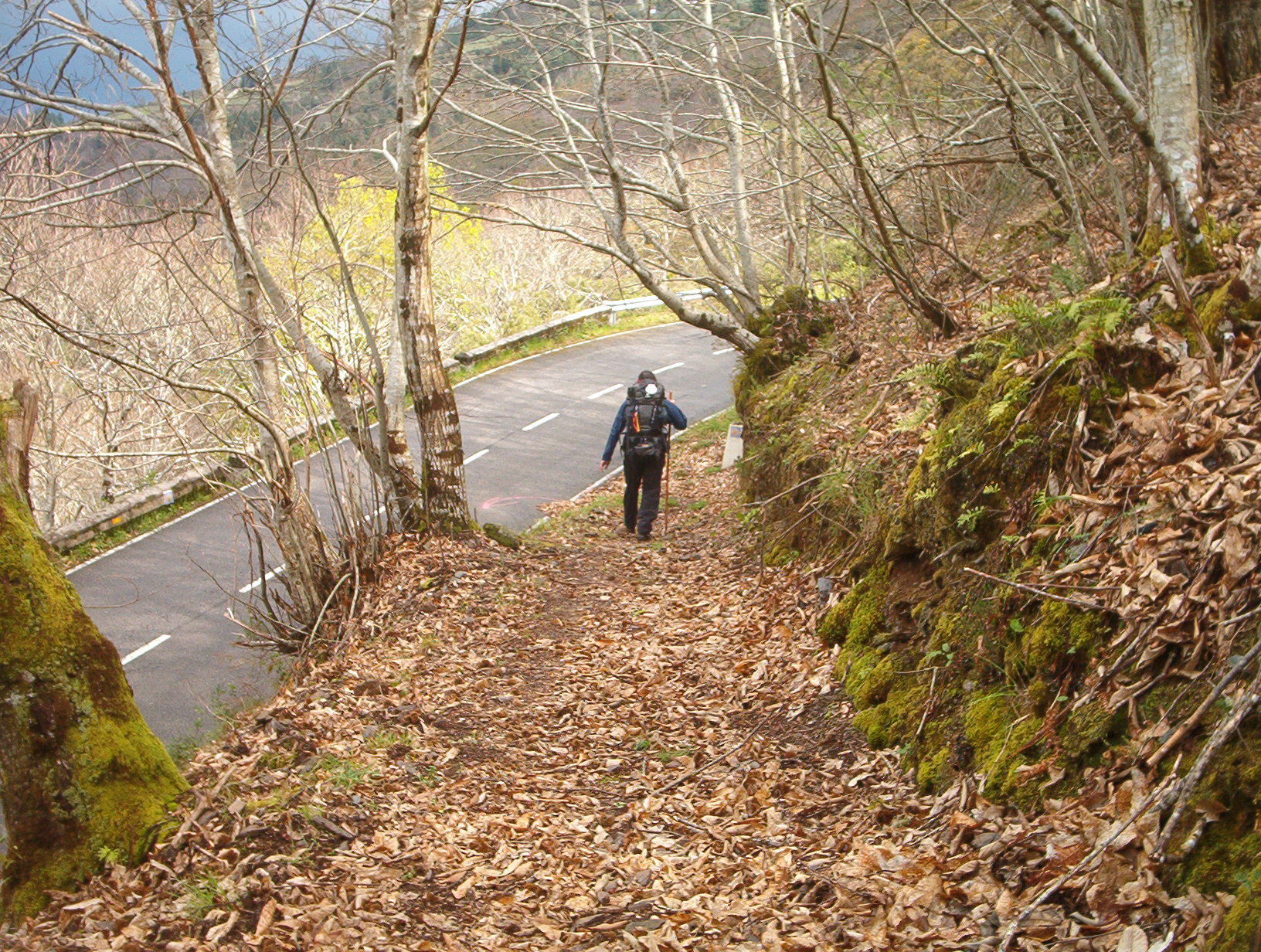 |
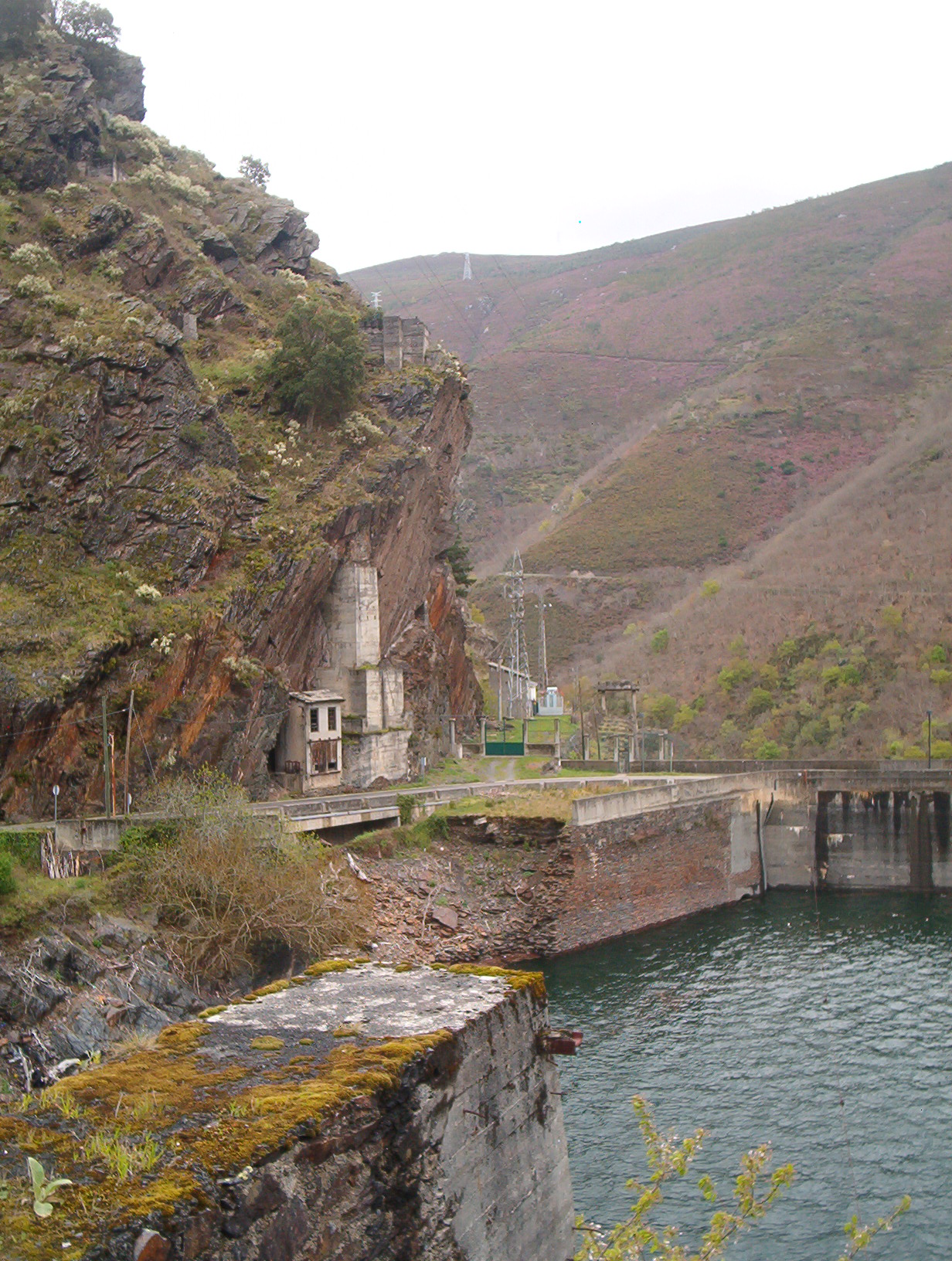 |
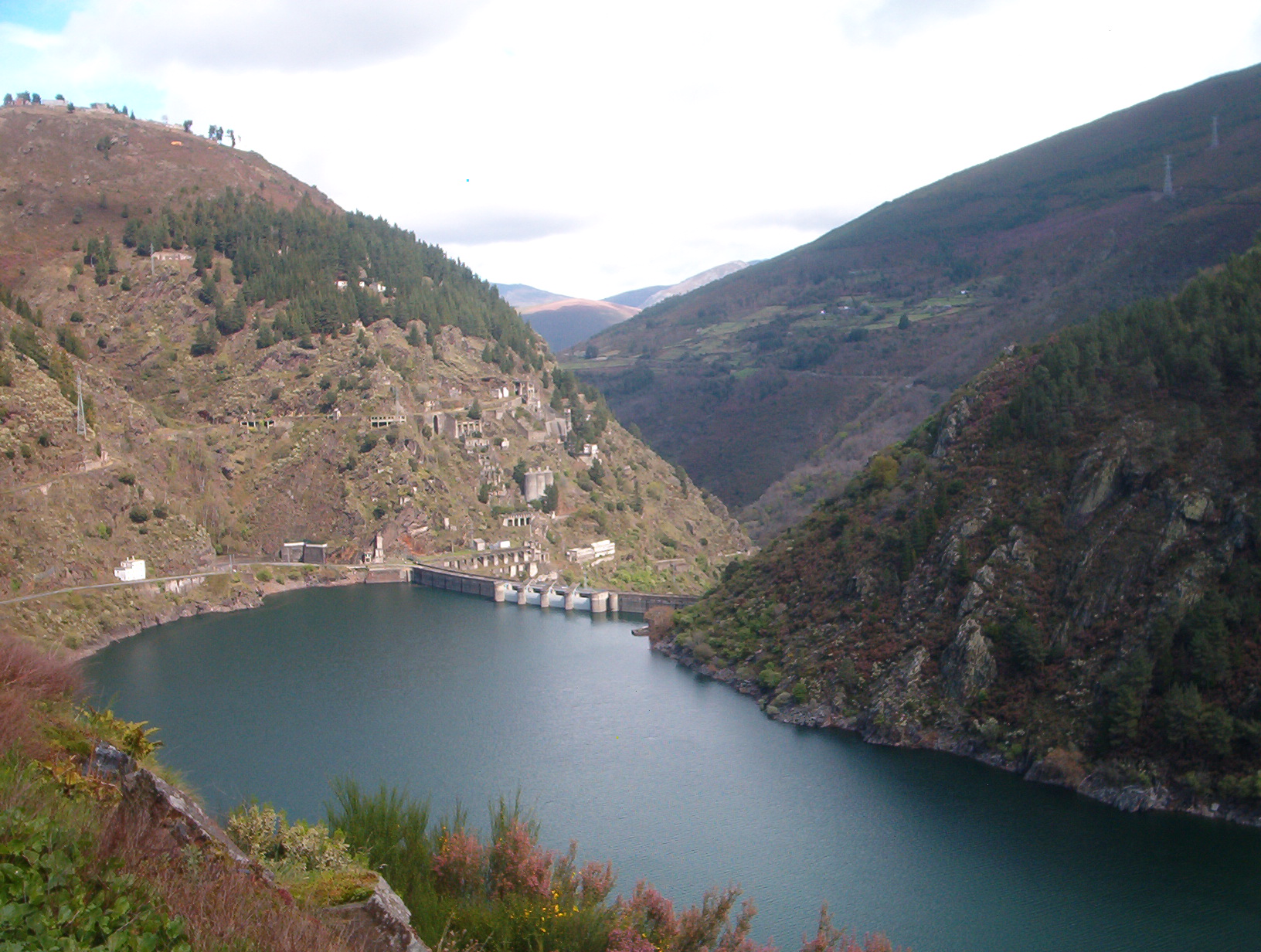 |
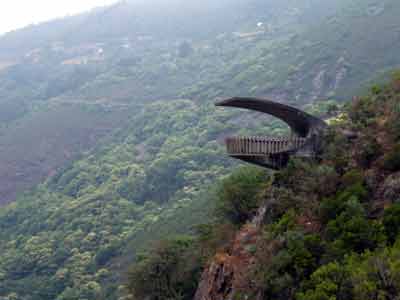 |
But you still have to cross to the other side, which means a descent of about 800 meters to the dam itself. This is accomplished gracefully by forest trails through stands of chestnut and birch trees. The path switches back and forth all the way down to the highway (the AS-14) and is relatively easy on the knees. From the highway you cross the dam itself, and follow the road into a narrow tunnel bored through the rock. This is followed by a stiff climb (that 800 meters again) back up to the Grandas side of the river.
The way down passes by an abandoned cortín (in Gallego, a corticeira) -- means an apiary. According to a couple of sources, the stone wall is to prevent bears from coming in and taking the honey. Now it's overgrown with flowering shrubs. On the way up, the highway passes a scenic overlook built out on the hillside. These items are arguably more interesting than the dam itself, or the abandoned construction crew housing, which is spooky.
Unfortunately, the climb back up toward Grandas is all highway. You pass a roadhouse hotel and restaurant, Las Grandas, open in season, and eventually you trudge into Grandas de Salime, previous winner of the Asturian Pretty Village competition. In the early Spring of 2008, all its streets were torn up and many of its buildings were undergoing refurbishment, perhaps in the hopes of attracting more city-folk tourists in the summer, when this higher-altitude countryside can be 20° F. cooler than the Cities of the Plain. Again, unfortunately, the town's Albergue de Peregrinos is not one of those place on the list for improvement, and it remains dark, damp, and unattractive. Better to seek accommodations elsewhere in town.
After checking out the Grandas town Albergue de Peregrinos, located just to the side of the Town Hall, Jaime suggested that we could find a better place to stay. He asked the owner of the restaurant where we had lunch -- callos madrileña (tripe stew -- a typical Madrid comfort food) and wine for him, fabada asturiana and cider for me -- and got a tip to a place next to the church, the town's most iconic and frequently photographed structure. He arranged accommodations through the bar on the other side of the church.
Apart from the Albergue problem, I thought that Grandas was indeed a fine little town. People were friendly and accommodating, and the eats were excellent.
On the way up from the Dam, I refilled my water bottle from a mountain spring, which was nothing more than a pipe stuck into the side of a mountain, gushing clear, cold water. Jaime tasted the water and pronounced it good, but it gave me a problem which stayed with me as far as Lugo, the first place with an open Centro de Salud where I could get it treated. I won't try unlabled spring water in Spain again.
 Previous
Previous
 Splash Page
Splash Page
 Next Page
Next Page